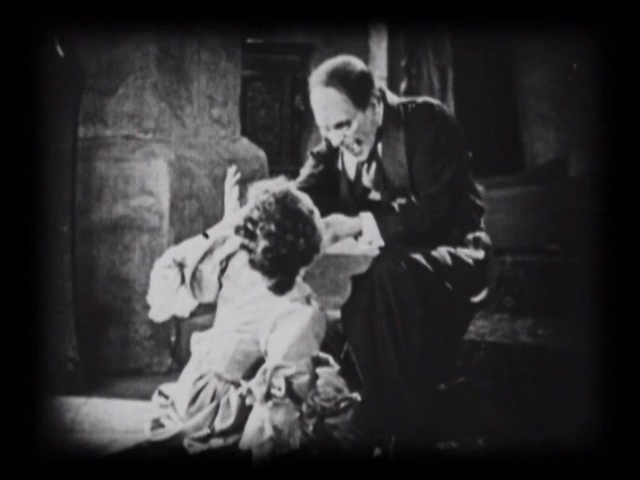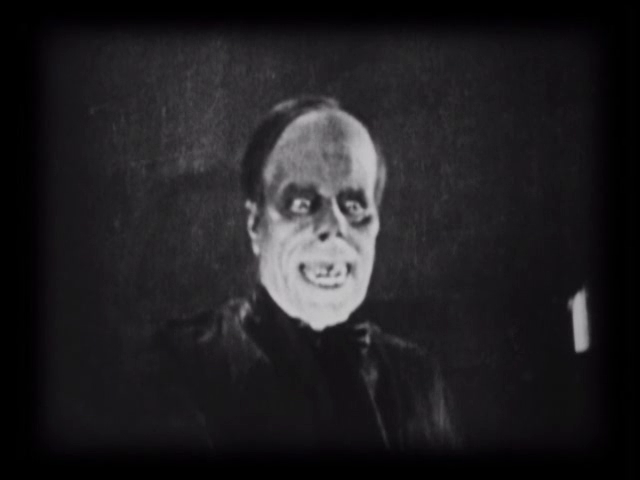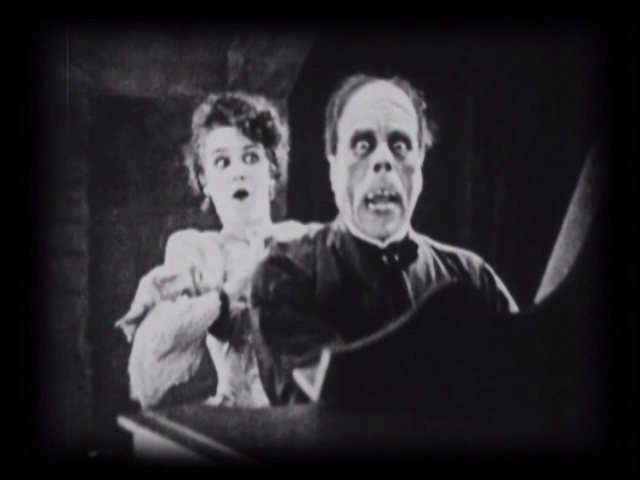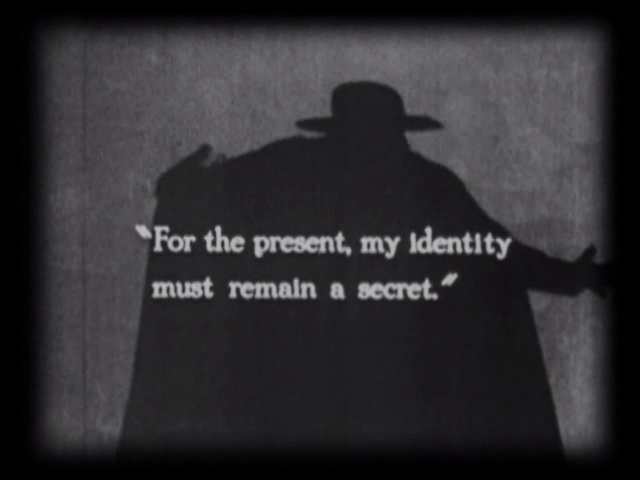Phantom of the Opera, The (1925)
“Feast your eyes — glut your soul on my accursed ugliness!”
|
Synopsis: |
|
Genres, Themes, Actors, and Directors:
Response to Peary’s Review: The first half may be somewhat slow, but it effectively sets up the premise of novelist Gaston Leroux‘s simple yet timeless “beauty and the beast” tale — and if you watch it at 1.5 or 2x speed (as I often do with certain sections of silent films), you shouldn’t have any problem staying focused. This is especially true given the consistently atmospheric camerawork (which makes fine use of shadowy effects), and the impressive sets throughout — including the still-extant (in part, anyway) recreation of the Paris Opera House, as well as the Phantom’s genuinely spooky underground lair, full of “secret doors, heat torture, chambers filling with water”, and more. Peary notes that “as in The Raven [1935] and Frankenstein [1931], [the] story deals with [a] significant horror premise: those who are monstrous-looking will act monstrously”. To that end, we don’t learn quite enough about what turned the Phantom into the hideous beast he’s become, but what’s interesting is that we never really feel sorry for him, despite knowing that he’s been unfairly treated somehow — likely because he commits cold-blooded murders from the moment the film starts, as soon as anyone gets too close to discovering his secret identity. Meanwhile, we don’t really feel much compassion for Philbin’s Christine, either — she’s a true ninny possessing nary a shred of common sense, and her boyfriend (Kerry) is equally lug-headed. But the film really is all about Chaney’s Phantom (the first of Universal Studios’ “monsters”, as pointed out by Richard Scheib) — and both he and his elaborate makeup are mesmerizing from start to finish. Note: The version I watched is the “original” b&w version that was likely circulating at the time Peary wrote his review; since then, however, a highly regarded DVD has been released which contains two different versions of the film — including one with a handful of Technicolor sequences. Click here to read more about the merits of the DVD, which apparently includes a wealth of information for anyone interested in the film’s fabled history. Redeeming Qualities and Moments:
Must See? Categories
(Listed in 1001 Movies You Must See Before You Die) Links: |









3 thoughts on “Phantom of the Opera, The (1925)”
A once-must, for its place in cinema (and horror) history, and of course for Chaney’s performance.
FFs probably shouldn’t (and wouldn’t) care about the more preposterous elements of this flick (and there are plenty of them). The thing is to see Chaney and soak up the very spooky atmosphere – that should be enough to satisfy.
Seeing this again, I don’t find there are real problems with the narrative as is (other than a few slight holes which don’t seem all that important). But several noticeably dumb things happen. For example:
– After Philbin’s premiere performance in ‘Faust’, Kerry goes backstage to congratulate her on finally achieving her goal. She responds by saying he must forget her. …From there, no conversation. He doesn’t even ask why; just takes her at her word and leaves. …Huh?
– When Philbin has gotten to a point with Chaney where she is in really serious danger, she meets up with Kerry and pleads with him to save her. They plan to escape the next night after another performance of ‘Faust’. …Huh? Why not, like…NOW?! (Of course, that would be the end of the drama right there.)
But, like I said, most viewers will probably not be paying attention to things like that. Or to the Philbin/Kerry love story at all, really. As noted, it’s a “ninny” meets “lug-head” thing, and of little real interest. (Although Kerry has moments of looking a bit hunky, at least.) As for Chaney…for argument’s sake…what if Philbin *did* fall in love with him as he wished? How could that ever work, anyway? Can you imagine the two of them having a quiet evening at home in the cellar of the Opera House? …Doing what?! The only thing they have in common is their tendency toward exaggerated arm movements to denote melodrama. …But, of course, that argument is unnecessary since Chaney’s Phantom is insane.
For this viewing, I did see the recently restored version – which has the tinted Bal Masque sequence (so you basically see sharper images for black, white and esp. red costumes). It’s a nice, effective added touch.
Flaws notwithstanding, I think the film still holds up well. I don’t find it all that slow in its first half and, all told, it’s not boring. It’s also a good one to have seen to better appreciate Brian De Palma’s cult classic ‘Phantom of the Paradise’.
Great film of course – try to see it with the restored two-strip Technicolor scenes which are fascinating for those interested in colour processes. They work really well in giving the film an eerie quality.
My complaint about Peary and Chaney is that while I’m delighted he also included Chaney’s epic ‘Hunchback of Notre Dame’, I’m disappointed he missed out my favourite Chaney film of all, ‘He Who Gets Slapped’ – and he also misses out possibly the most perverse of all Chaney films (and that’s saying something), ‘The Unknown’.
⭐️⭐️⭐️⭐️⭐️
One of the all-time great horror films; best seen in the Milestone restoration with the superb Carl Davis score. Sublime.